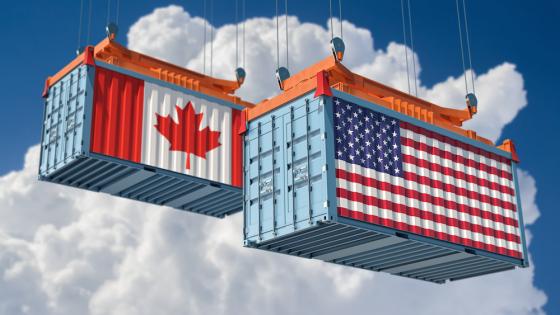The most significant development during the G20 summit in Mexico occurred on the sidelines and was largely buried in media reports. It was the decision to invite Canada and Mexico to join negotiations for the Trans-Pacific Partnership (TPP). Adding Mexico and Canada to the current nine-member TPP will result—if negotiations are successful—in a free-trade area covering some 658 million people and about $20.5 trillion in economic activity.
Many trade analysts predict that the move by Canada and Mexico will produce a domino effect, beginning with the addition of Japan and South Korea within the next year (Parker and Goodman 2012, Mulgan 2012). That would produce a free-trade area encompassing over 700 million people with a combined GDP of some $26 trillion. This prospect that gives substance to the claim that in an otherwise lacklustre and frustrating G20 summit this breakthrough is potentially a really big deal.
For most of their history, the TPP negotiations have been conducted beneath the radar of publicity or media attention. They began in 2005 with four small nations—Singapore, Brunei, New Zealand and Chile—aiming for a high standard, US-model trade agreement, with the goal of providing a pathway ultimately to an inclusive, trans-Pacific trade and investment open market. Australia, Peru, Vietnam and Malaysia subsequently signed on, but the transforming event came with the decision of the Bush administration to start the process for US membership in its last months in office.
Though conflicted and hampered by a Democratic party deeply divided on trade policy, the Obama administration decided after months of deliberations that its much-touted pivot to Asia would have little credibility absent US leadership toward greater trade and investment liberalisation throughout the region. It was also aware the Beijing was busily promoting an intra-Asian trade structure that would exclude the US.
Detailed negotiations for the TPP began in early 2010, and since then some thirteen rounds have been conducted (Barfield 2011). Aware that the WTO Doha Round has bogged down in failure after a decade-long slog, the TPP nations set an ambitious goal of completing the pact by the end of 2012. They will not meet that goal, but most observers hold that they will work through the remaining tough issues—including new rules on intellectual property, market access, rules of origin, and investor-state dispute settlement-- by the latter months of 2013.
Eliminating behind-the-border barriers
One complicating factor is the uniqueness of the negotiating process. Unlike any previous trade negotiation, TPP negotiators face the challenge of adding new members (Mexico and Canada, and possibly others) as they are hammering out the details of the pact itself. To avoid reinventing the wheel in the coming months, Canada and Mexico have agreed that they will not attempt to reopen sections of the text where issues have been settled.
What differentiates the TPP from other trade agreements is that it aims to lower or eliminate behind-the-border barriers to competition from foreign goods and services. Thus, the agreement sets out rules for government procurement, services (including financial, telecommunications, accounting), investment, health and safety regulations, intellectual property, fair competition with state-owned-enterprises, supply-chain management, and regulatory due process, If the negotiations succeed, these features will turn the TPP into a model 21st century FTA (see Barfield 2011).
Despite the emphasis on 21st century regulatory reform, it turns out that some longstanding 20th century trade issues are proving the most difficult. For the US, the greatest challenges stem from sugar, dairy, and cotton protection and subsidies; from textiles, and so-called rules of origin that hamper clothing supply chains; and from union demands for interference with the labour laws of US trading partners.
In the end, the key to success in the end will come down to tradeoffs between 21st century liberalisation and old-fashioned 20th century protectionism. By all economic analyses, the benefits are clearly worth the short-term adjustment costs. The most cited study estimates that region-wide integration in the Asia-Pacific would generate almost $2 trillion in additional trade by 2025, with an additional $290 million for US exports (Petri et al 2011).
Will the national interest coincide with the political agenda?
Much could go wrong in the crucial endgame negotiations after the US elections and in the first months of 2013. For instance, the Obama administration has fed the high ambitions of American corporations to get their way on major issues. But there are bound to be disappointments and compromises for which they have been little prepared.
Conversely, other TPP members may reciprocate with rigid final positions—New Zealand on intellectual property, or Australia on the international arbitration of investor disputes as examples. Yet over the past two years, a strong esprit and commitment has developed; and there is a reasonable chance that the negotiators can craft workarounds for the most intractable differences.
In the weeks before the G20 summit, the Obama administration seemed to be dragging its feet on delivering the crucial invitations to Canada and Mexico. But at the last they did move with dispatch so that, for once, the national interest coincided with the political agenda (Barfield 2012).
There is one final huge benefit to adding Canada and Mexico to the TPP. It will finesse the inevitable political fight that would have occurred if—as is far overdue—the US, Canada and Mexico moved to update the 1990s North American Free Trade Agreement. If this all works out, at least we will be spared the demagoguery related to the 'Giant Sucking Sound' of jobs allegedly being extracted from the US market.
Editor’s note: A version of this article appeared in The American.
References
Barfield, Claude, “Let’s Bring Canada and Mexico into the Pacific Pact,” Real Clear Markets, June 13, 2012.
Barfield, Claude, “The Trans-Pacific Partnership: A Model for Twenty-First Century Trade Agreements?,” International Economic Outlook, No. 2, 2011, American Enterprise Institute, Washington, D.C.
Mulgan, Aurelia George, “Is Japan going to negotiate its way into the Trans-Pacific Partnership (TPP) any time soon,” East Asia Forum, May 30, 2012.
Parker, David A and Matthew P. Goodman, “Korea: TPP Beckons, “ Global Economic Update, July 2012, CSIS, Washington D.C.
Petri, Peter A, Michael G. Plummer and Fan Zhai, “The Trans-Pacific Partnership and Asia-Pacific Integration: A Quantitative Assessment,” East-West Center Working Papers, No. 119, October 24, 2011, Washington, D.C.


